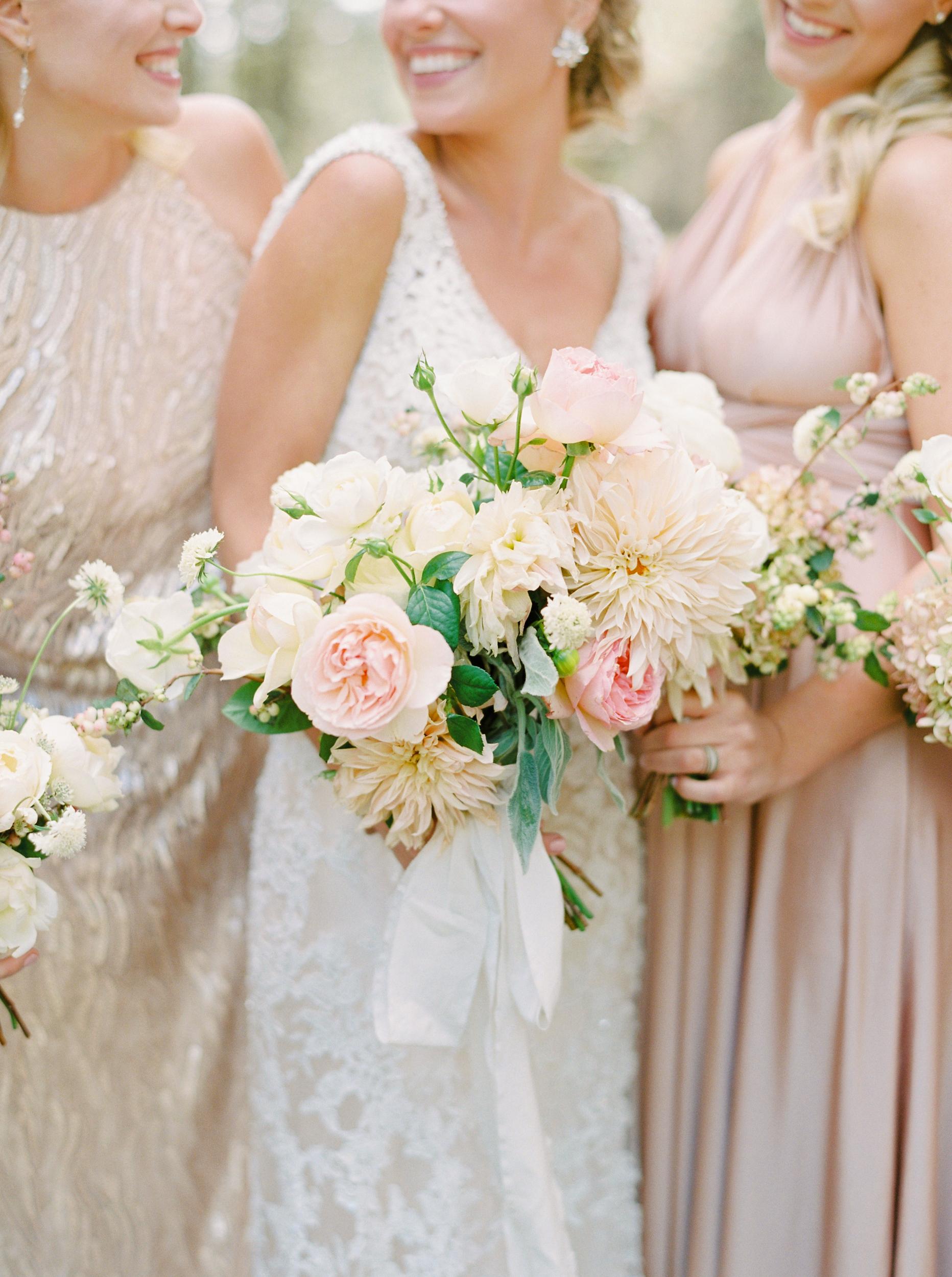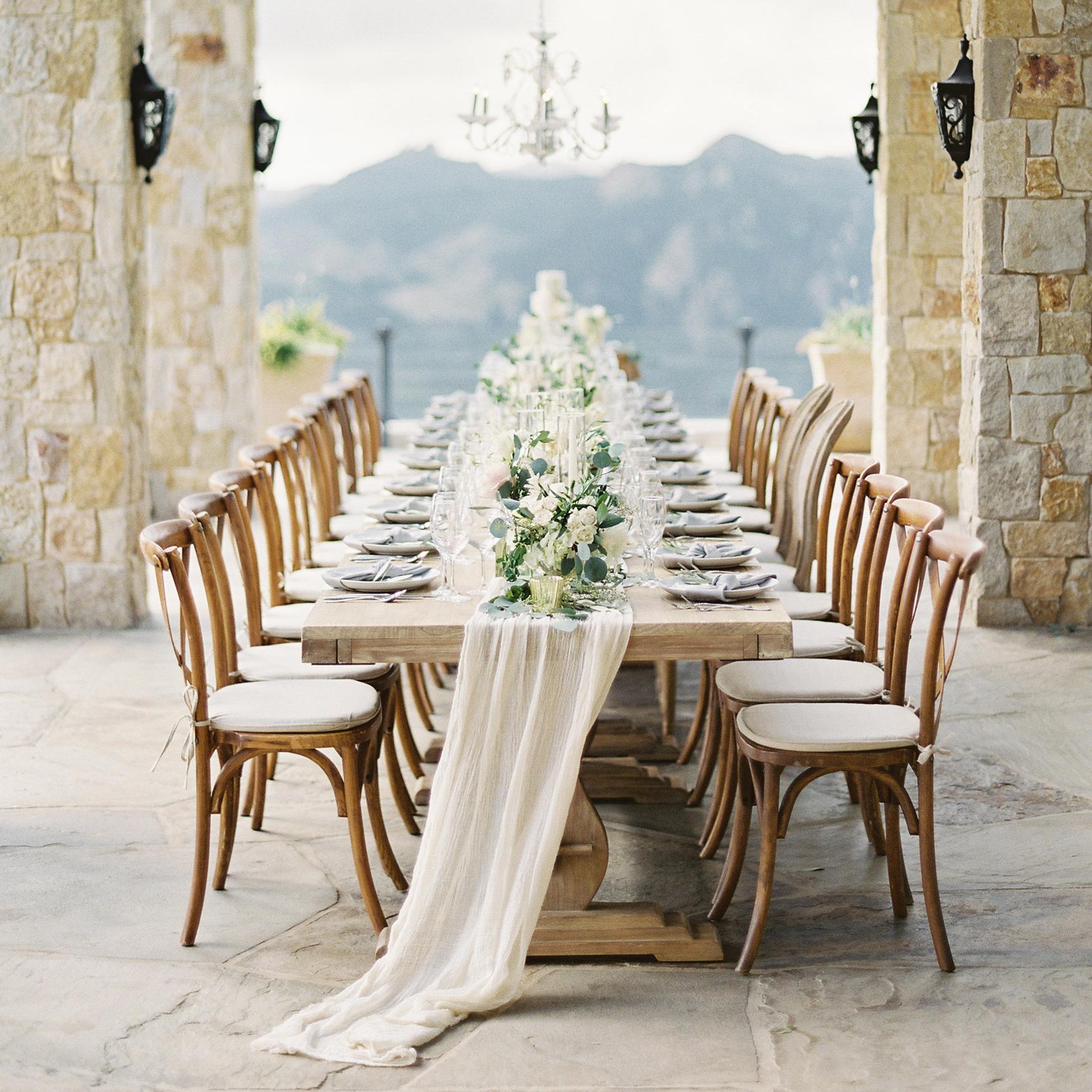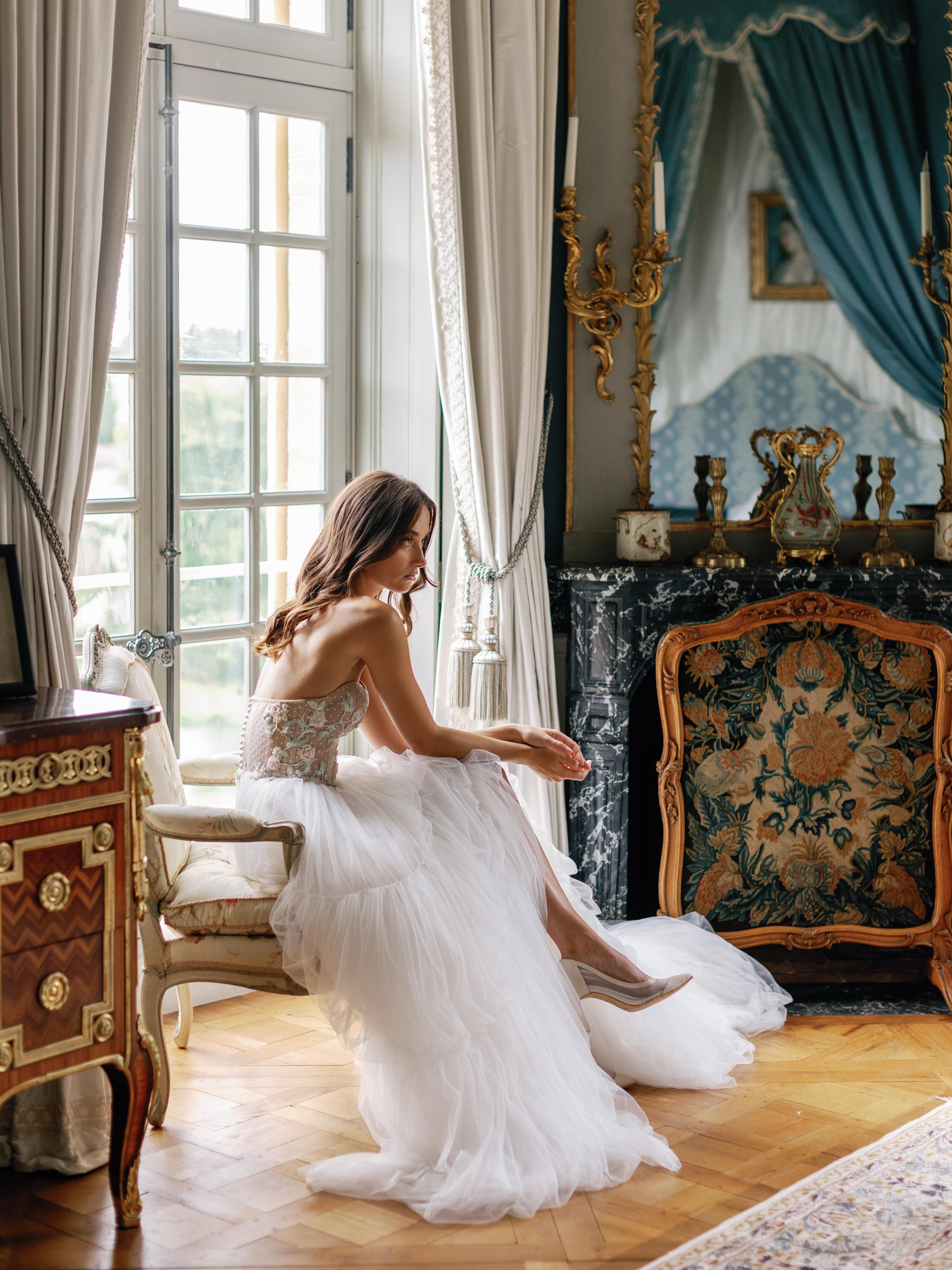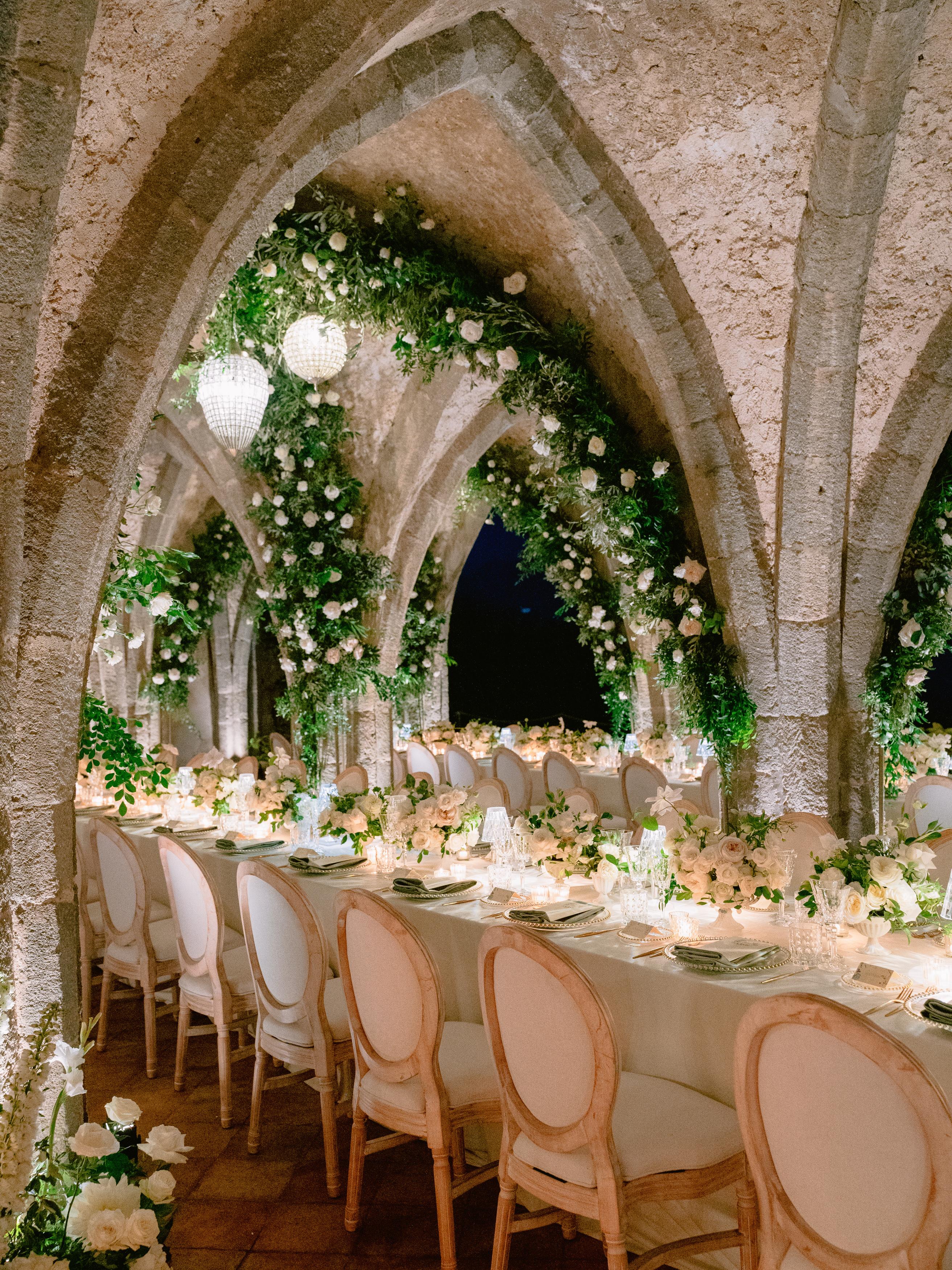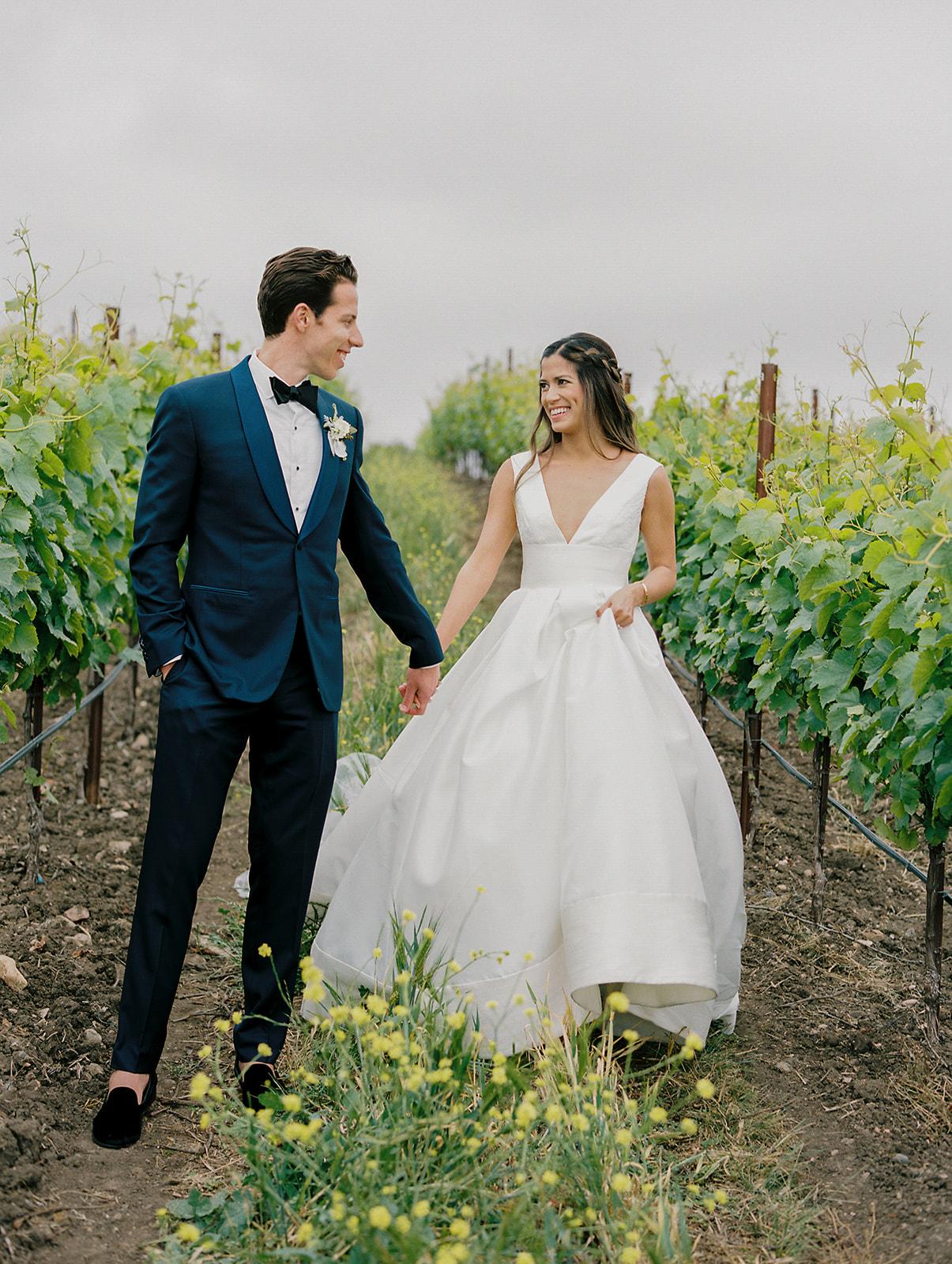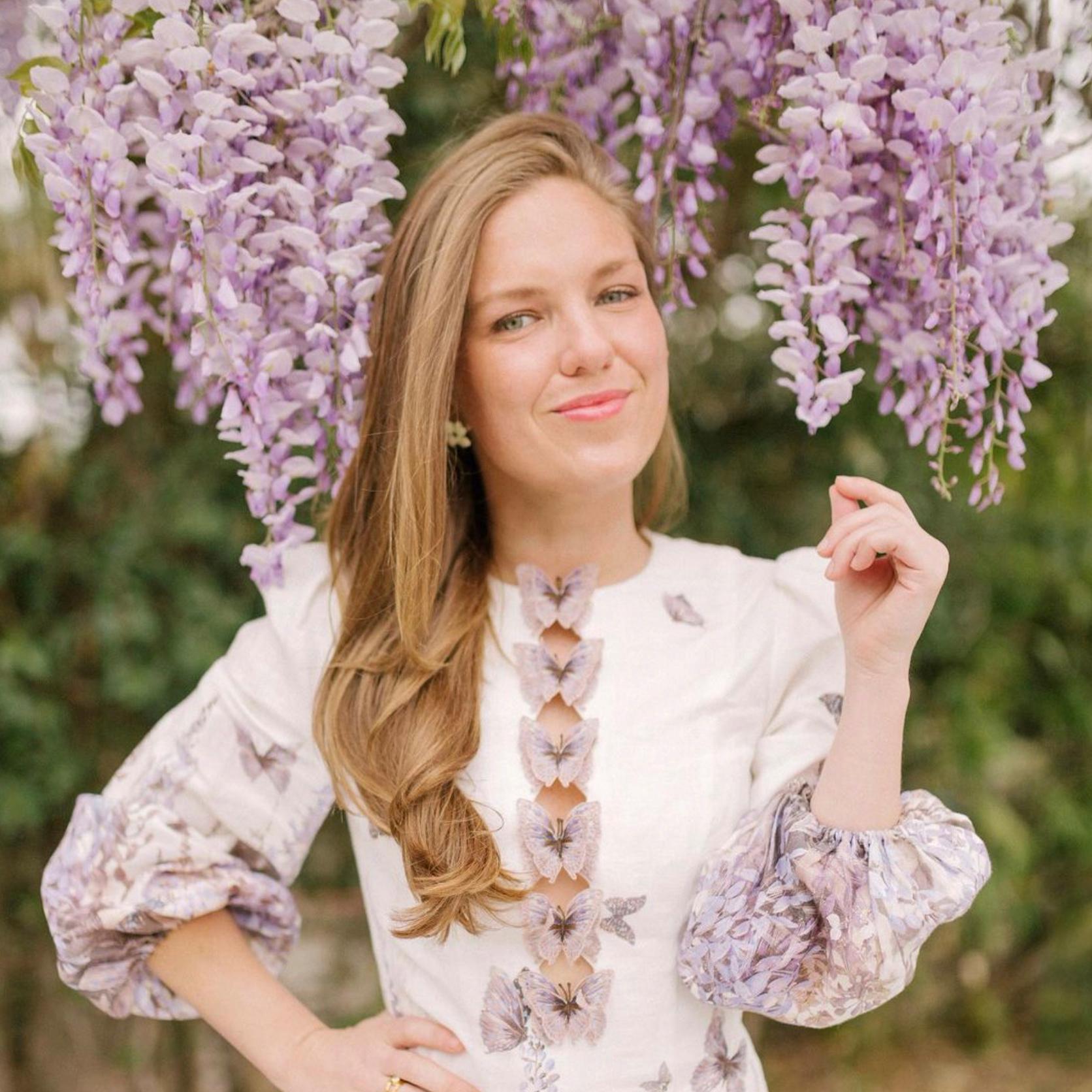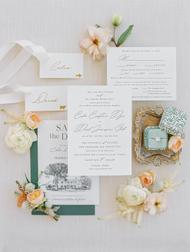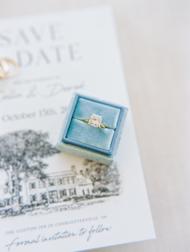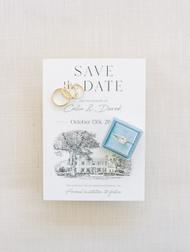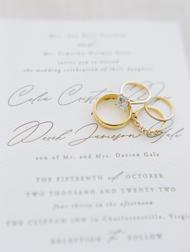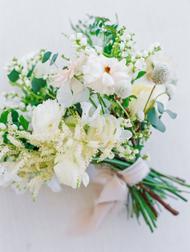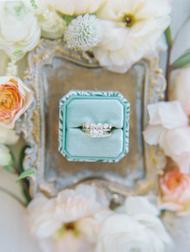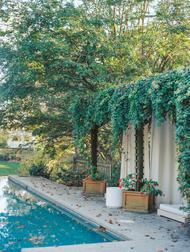This majestic mountain wedding is simply magical. From the sweeping views to the carefully curated details artfully planned by Moments by Madeleine Weddings & Events, each elegant moment is better than the last. Garden-inspired floral design from Fall For Florals is wildly romantic, and the love and joy of the day is exquisitely captured in imagery by Justine Milton Photography. Prepare to fall in love inside the full gallery.
From the bride… One of the first trips Matt and I took together was to Fairmont Banff Springs. I remember thinking it was the most beautiful place I’d ever been. When it came time to plan our wedding, we knew we wanted a destination wedding as travel is a huge passion of ours, and Fairmont Banff Springs immediately came to mind. We couldn’t wait to share this magical place with our family and friends. After choosing our date and venue, I knew the next thing I needed was to get a wedding planner! Instagram was actually my biggest resource for this. I stumbled upon Moments by Madeleine Weddings & Events profile and immediately identified with her classically romantic style. I totally leaned into her vendor recommendations as we weren’t able to make it up to Fairmont Banff Springs until a few months prior to the wedding and we had the best group of vendors! We had a fair share of bumps in the road our wedding week (canceled flight, lost luggage, and a last-minute change in ceremony venue from the outdoor terrace to inside due to rain) and could not imagine doing it without our amazing vendors. Luckily Madeleine was able to work her magic and get the iconic Mt. Stephen Hall for our indoor ceremony!
My advice for other brides is to hire a wedding planner you can completely trust and try your best to roll with the punches. Things will inevitably occur you hadn’t anticipated but at the end of the day, you are still marrying the love of your life! I am by no means claiming this is easy, as I was in tears thirty minutes prior to walking down the aisle making the tough decision to move my ceremony inside! For photos, Matt and I decided to take time just for the two of us to go off the resort property and capture some amazing images with Justine Milton Photography! Despite the rain, the pictures all turned out better than I could have ever hoped! Madeleine and Justine went above and beyond and moved my ceremony flowers outside to the original ceremony spot so we could have photos on the outdoor terrace! We got a vintage 1956 Rolls Royce (a nod to Matt’s late grandmother) and it made the best photo prop! It was so fun to sneak away as newlyweds drinking champagne and enjoying this special time together. Not only did we have amazing photos, but our video teaser turned out amazing! After looking through the recommendations Madeleine sent I had no doubt that I had to have Justine Milton Photography for photos and Parfait Productions for the video! Matt was by my side every step of the way in the planning process. For the most part, he was very go with the flow but he did feel very strongly about him and the wedding party wearing Jordan 1’s for the ceremony and they all rocked it! He also knew how sad I was our dog, Luna, couldn’t be there for our wedding day so he surprised me and brought a squishmallow dog that resembled her! Although the weekend was all about our love story, we wanted to give a nod to our guest’s love story too! We found out all the couple’s first dance songs at their wedding and had our DJ play these songs during dinner. It was so fun to see their secret smiles and even tears as they recognized their song.
We knew we wanted an intimate wedding and it meant the world to us that our close inner circle traveled to Fairmont Banff Springs to be with us! It was amazing having such a small group and feeling like we really got time to spend with each and every guest. Family is very important to both of us so we kept our wedding party small and it was all family. Matt’s brother and my brother were his groomsmen, my nephew was our ring bearer and his sister and my niece were my bridesmaids! Our good friend, David, is a pastor and he was our wedding officiant and it was so touching to have such a personal ceremony. I’m not sure there was a dry eye in the audience! As soon as Moments by Madeleine Weddings & Events mentioned a champagne tower, we were all in! We love champagne and what better reason to celebrate!! We really wanted our reception to feel like an intimate dinner party and feel like the champagne tower, long tables, and all the candles helped us accomplish this goal. I went to many bridal stores and tried on a ton of dresses! Despite that none really felt like “the one.” Madeleine happened to mention checking out the brand Aleena Lena and luckily one bridal shop in my hometown carried it. It was a total last-minute decision so I actually went to this shop by myself! My dress immediately caught my eye but I didn’t grab it to try it on. When my consultant pulled it and I put it on, I knew it was the one! My family and friend affirmed my decision after I sent photos. I knew I wanted a timeless design but this had a playful touch with the ruffle sleeves and the silk polka dot textured fabric. I can’t tell you how many compliments I received on my dress! Our day was straight out of a fairy tale and I continue to re-live it through our amazing photos and video. I can’t thank Moments by Madeleine Weddings & Events and our vendors enough for giving us such a magical wedding day!
[iframe http://player.vimeo.com/video/793304927 600 338]
Photography: Justine Milton Photography | Cinematography: Parfait Productions | Event Planning: Moments by Madeleine Weddings & Events | Floral Design: Lindsey Kao | Cake: Kake by Darci | Invitations: Plush Invitations | Ceremony Venue: Fairmont Banff Springs | Reception Venue: Fairmont Banff Springs | DJ: Pez Productions | Beauty: Stella Chio Hair | Beauty: Madi Leigh Artistry | Rentals: Modern Luxe Rentals












